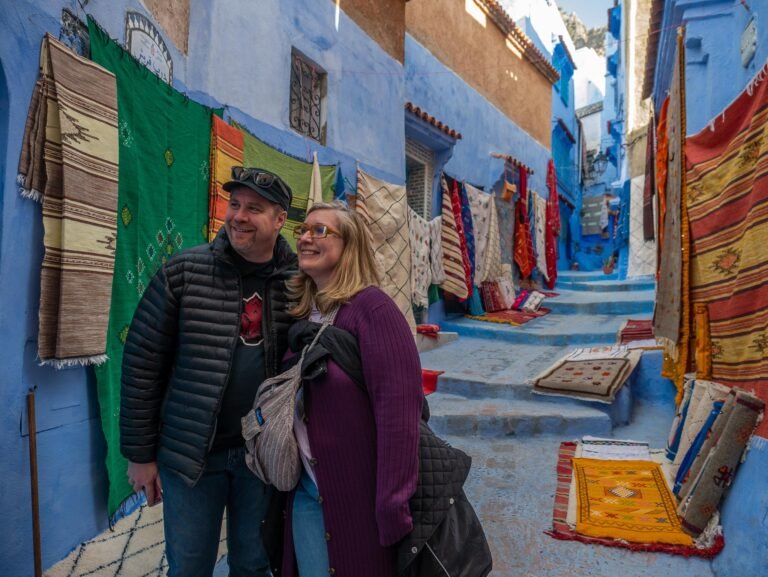Morocco, a land of vibrant markets, stunning landscapes, and rich cultural heritage, attracts travelers year-round with its charm and allure. Though, while the country boasts many ideal times to visit, there are certain periods that pose significant challenges for tourists.Understanding the worst times to explore Morocco is crucial for a smooth and enjoyable experience. Factors such as extreme weather, local holidays, and crowded tourist seasons can impact overall travel plans, leading to discomfort and missed opportunities to fully appreciate the country’s beauty. In this article, we will delve into these less-than-ideal periods, shedding light on the difficulties travelers may face, and offering insights to help you navigate this mesmerizing destination more effectively. By being aware of the challenges that certain times present, you can make informed choices that ensure a more rewarding journey through the enchanting landscapes and rich flavors of Morocco.
understanding Seasonal Weather Patterns and Their Impact on Travel Experience
Traveling to Morocco can be a profoundly enriching experience, but it is indeed essential to consider the impact of seasonal weather patterns on your journey. Winter, especially from December to February, can bring chilly temperatures and occasional rain, especially in coastal areas. This might deter avid explorers from fully engaging in outdoor activities, such as hiking in the Atlas Mountains or strolling through the vibrant souks. Conversely, summer, particularly June through August, frequently sees blistering heat, especially in the interior regions like Marrakech and the Sahara Desert.Tourists may find themselves unable to explore the sites due to the extreme temperatures, leading to a less enjoyable trip.Consider the following key challenges when planning your visit:
- Heat and Hydration: Summer months can push temperatures above 40°C (104°F), making it imperative to stay hydrated and limit outdoor activities to early morning or late evening.
- Visibility and Dust Storms: Spring can bring dust storms, which reduce visibility and can lead to travel disruptions, particularly in desert areas.
- Festivals and Crowds: Ramadan, while culturally intriguing, may alter operating hours of businesses and attractions, impacting your travel itinerary.
Moreover, fluctuations in precipitation throughout the year can cause unexpected challenges, such as road closures in rural areas or increased humidity along the coast. Understanding these patterns is crucial for optimizing your travel experience and enjoying all that Morocco has to offer. For those who wish to experience the country’s rich culture and landscapes comfortably,timing your visit during the shoulder seasons—spring (March to May) and fall (September to November)—can provide more moderate weather and fewer crowds,allowing for a more immersive and satisfying adventure.
Navigating Cultural and Festive Challenges During Peak Tourist Times
Visiting Morocco during peak tourist times can be a double-edged sword – while the vibrant atmosphere can be enticing, it often brings with it a unique set of challenges that travelers must navigate.Cultural sensitivity becomes paramount, as the influx of visitors can sometimes clash with local customs and traditions. it’s essential to be aware of practices and etiquette unique to Moroccan life. In busy marketplaces or during significant festivals, like Ramadan or Eid, tourists may find themselves overwhelmed by the crowds, potentially leading to cultural misunderstandings.Here are some key points to keep in mind:
- Local Simplicity: Embrace the slow pace of life; take time to appreciate local customs.
- Respectful Attire: Dress modestly, especially when visiting holy sites or rural areas, to honour local sensibilities.
- Language Barriers: Learning a few basic phrases in Arabic or Berber can go a long way in bridging cultural gaps.
- Festival Timing: Plan your trips around local events; busy times can lead to shortages, higher prices, and limited services.
Furthermore, the sheer volume of tourists can strain local infrastructures, from transportation to hospitality services, which might impact your overall experience negatively. Below is a brief comparison of peak tourist times versus quieter months:
| Time Period | Tourist experience | Cultural Engagement | Price Range |
|---|---|---|---|
| Mar – May / Sept – Nov | Balanced | High | Moderate |
| Jun – Aug | Overcrowded | Limited | High |
| Dec – Feb | Quiet | Moderate | Low |
In light of these considerations, finding the right balance between cultural immersion and avoiding overwhelming tourist hotspots is key. By choosing your travel dates wisely, you can experience morocco in a way that enriches your visit and respects the local culture, ultimately crafting a journey that stands out in your travels shared on Gezify.
while Morocco offers a rich tapestry of culture and beauty, understanding the worst times to visit can significantly enhance your travel experience. From the scorching summer heat to the hustle and bustle of peak tourist seasons, being aware of these challenges allows for better planning and a more enjoyable trip. By choosing the right time to explore this enchanting country, you can fully appreciate its landscapes, history, and hospitality. we hope this guide helps you navigate the complexities of traveling to Morocco, ensuring a memorable and fulfilling journey. Safe travels!
